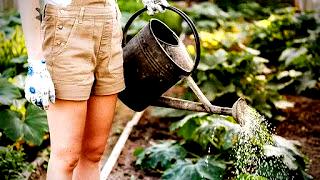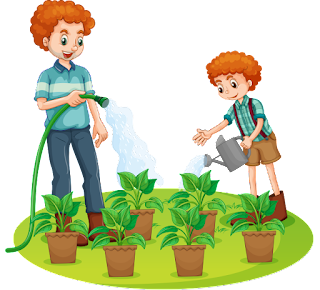7 Worst Mistakes to Avoid When Watering Your Vegetable Garden
Keep all your vegetables well moist and healthy with these simple tips.
How do you know when to water your vegetables and how much water to apply? It's not difficult, but there are some nuances when watering vegetables that you need to know to get the most out of your irrigation efforts. For example, watering seedlings is different from watering established vegetable crops. Watering beds in the ground is different from watering cans. And it's better to water in the morning than in the afternoon. Understanding these differences will maximize your irrigation efficiency. Here are the top mistakes to avoid so your vegetables get all the water they need for a healthy harvest.
1. Under- or over-watering of seedlings.
Just because they develop roots, newly planted seeds and young seedlings need a constant supply of moisture - don't let them dry out! Water the seedbeds lightly each morning and check again in the evening. If a dry crust forms on the soil surface, new seeds may be difficult to germinate. And if a germinating seed dries up, it may die.
On the other hand, don't let the soil get too wet; over-watering a seedling bed can encourage diseases such as wilting, a fungus that kills young seedlings. The key is to provide an evenly moist (not wet) soil until the young plants develop healthy roots.
2. Water frequently rather than deeply.
While daily watering is important for seedling germination, established plants should be watered differently. Frequent shallow watering can revitalize your plants in the short term, but it also promotes shallow root growth. This means plants dry out quickly when the soil surface dries, which can happen quickly on a hot, sunny day. When you water deeply, the roots will grow beyond the top few inches where they are better protected from rapid moisture fluctuations and less likely to dry out. Deep watering two to three times a week (taking into account rainfall) will encourage healthier and more productive growth than frequent shallow watering.
As counterintuitive as it may seem, watering after a light rain can be very productive. After a shower that wets the soil surface with just an additional soak can wet the soil to a depth of several inches, providing a deep drink for your plants.
3. Not using a rain gauge.
Most vegetable plants grown in the ground need about an inch of water each week, whether rain or irrigation. Of course, this depends to some extent on your soil - a sandy soil will dry out more quickly than a heavy clay soil. (Raised beds and container gardens need more water - see below). Keep track of how much rain your garden is getting using a rain gauge; Record rainfall amounts (write a note in your garden diary work) so you know when supplemental irrigation is needed.
4. Underwater vessels and raised beds.
Vegetables and herbs grown in containers or raised beds need water more often than buried beds. Why? First of all, the soil mix used in containers and raised beds is designed to drain faster than the soil of a subterranean bed. Second, because their land is above ground level, the temperature rises rapidly on hot days and evaporation increases. Regularly check the moisture level in your containers and raised beds by sticking a moisture meter or your finger a few inches into the soil. If the soil is dry, it's time to water.
5. Watering in the heat of the day.
The best time to water your garden is in the morning, when leaves that might get wet have plenty of time to dry before night. Watering is less efficient in the heat of the day; water evaporates faster and reaches the root zone less. Evaporation slows again when temperatures drop in the evening, but cooler nighttime temperatures also facilitate the spread of some foliar diseases. If you must water in the evening, avoid wetting the leaves.
6. Soaking leaves.
Plants get their moisture from their roots, not their leaves. Direct your watering to the soil surface and avoid getting the leaves wet because water helps some plant diseases spread. Use a watering rod to reach ground level, or use a soaker hose or drip irrigation system to wet the soil instead of leaves.
7. Soil splatter on leaves.
Soil can harbor many plant diseases. These diseases can spread if your irrigation efforts splash soil on your plants' leaves, so use a light spray or a milking hose. A two-inch layer of mulch around your crops, such as tomatoes that are prone to a number of foliar diseases, will help keep the soil from splashing around when you water or it rains.

